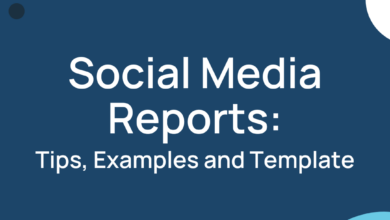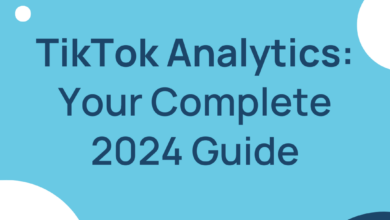The Ultimate 2024 Guide to Mastering Twitter Analytics

Social media is a battlefield for brands, and Twitter (or X, as it’s now known) stands out as a dynamic but challenging platform for audience engagement and brand visibility.
Why Twitter Analytics Matter
Twitter is not just about tweets; it’s a goldmine of data waiting to be harnessed. With millions of tweets sent every day, understanding your Twitter performance is crucial for:
- Enhancing Engagement: Discover what resonates with your audience.
- Tracking Growth: Monitor follower statistics and engagement trends.
- Competitor Benchmarking: Stay ahead by understanding your market position.
- Optimizing Content Strategy: Tailor your content based on performance insights.
Understanding Twitter Analytics
What is Twitter Analytics?
Twitter Analytics is a powerful tool that shows you how your tweets are doing. Think of it as a report card for your Twitter account. It gives you all sorts of information about how people interact with your tweets and who your audience is. This tool is free and available to anyone who uses Twitter.
How Does Twitter Analytics Work?
When you tweet, people can do different things like liking your tweet, retweeting it, or replying to it. Twitter Analytics keeps track of all this. It also watches how many people see your tweets and click on any links you share. This tool collects all this data and puts it in a neat dashboard so you can see everything easily.
Types of Data and Metrics in Twitter Analytics
Twitter Analytics gives you a bunch of different numbers and stats. Here are some key ones:
- Tweet Impressions: This is how many times people have seen your tweet. It’s like counting every pair of eyes that glanced at your tweet.
- Engagements: This number shows how many times people have interacted with your tweets. This includes all the likes, shares, comments, and link clicks.
- Engagement Rate: This is a percentage that tells you how often people interact with your tweets compared to how many times they’re seen. A higher percentage is usually better.
- Followers: You can see how many followers you have and how this number changes over time. It also tells you about the interests, locations, and other details of your followers.
- Top Tweets: This part shows you which of your tweets got the most attention. It helps you understand what kind of content your audience likes best.
- Video Views (if you post videos): If you share videos, it will tell you how many times they’ve been watched.
These metrics help you understand what works well on your Twitter account and what doesn’t. By looking at this data, you can make better tweets that your followers will love.
How can you set up Twitter Analytics?
Setting up Twitter Analytics is easy and can be done in a few simple steps. Here’s how you can get started:
Step-by-Step Guide to Access and Set Up Twitter Analytics
- Log into Your Twitter Account
First, make sure you’re logged into your Twitter account. You need to have a Twitter account to use Twitter Analytics.
- Go to the Analytics Page
Once logged in, go to the Twitter Analytics website. You can do this by typing “analytics.twitter.com” in your web browser or by clicking on “More” in the menu on the left side of your Twitter homepage, and then selecting “Analytics.”
- Check Your Dashboard
As soon as you enter Twitter Analytics, you’ll see your dashboard. This is where all your data will show up. For the first time, it might take a few moments to load all the information.
- Explore Different Tabs
You’ll see different tabs like “Home,” “Tweets,” and “More.” Each tab shows different kinds of information. The “Home” tab gives you a summary of your Twitter activity.
Tips on Customizing Your Analytics Dashboard
- Choose What to Focus On:
Decide what’s most important for you. Is it the number of followers, how much people interact with your tweets, or something else? Focus on those metrics.
- Use Date Ranges:
You can change the date range to see data from different time periods. This is useful to compare how you’re doing now versus last month or last year.
- Bookmark Important Metrics:
If there are specific metrics you always want to see, keep them handy. You might want to regularly check your top tweets or follower growth.
- Regular Check-Ins:
Make it a habit to check your Twitter Analytics regularly. This helps you stay up-to-date with how your tweets are performing.
Unfortunately, there’s not a whole lot more ways to customize your analytics within Twitter, and the metrics you can get are maybe not as in depth as a marketer would like.
For that, you might want to check out external tools. Locowise provides hashtag tracking, automated client reporting, and predictive analytics all in one platform. Check it out with a demo or jump right into a free trial to see for yourself.
Key Metrics to Track in Twitter Analytics
Understanding key metrics in Twitter Analytics is crucial for gauging your success on the platform. Let’s dive into some of these important metrics and learn what they can tell us about your Twitter performance.
1. Engagement Rate
What it is: Engagement rate measures how much people interact with your tweets. This includes likes, retweets, replies, follows, and link clicks.
Why it’s important: A high engagement rate means people find your tweets interesting or valuable. It’s not just about how many people see your tweet, but how many find it compelling enough to interact with.
How to interpret: Compare your engagement rate over time. If it’s increasing, your content resonates well with your audience. If it’s decreasing, you might need to change your content strategy.
2. Follower Growth
What it is: This metric tracks the increase or decrease in your number of followers over time.
Why it’s important: More followers mean a larger audience for your messages. Monitoring follower growth can indicate the effectiveness of your tweeting strategy.
How to interpret: Look for trends. Spikes in follower growth can be tied to successful tweets or campaigns. A steady decline might suggest your content isn’t engaging enough for your audience.
3. Tweet Impressions
What it is: Impressions are the number of times your tweet has been seen. This doesn’t mean interactions, just views.
Why it’s important: Impressions give you an idea of how far your tweet has traveled. Higher impressions mean higher visibility.
How to interpret: More impressions are generally good, but also look at engagement. High impressions with low engagement can indicate your content isn’t striking the right chord.
4. Link Clicks
What it is: This counts the number of times links in your tweets are clicked.
Why it’s important: Link clicks are crucial for understanding how effectively your tweets drive traffic to your website, blog, or other online content.
How to interpret: High link clicks indicate effective content or calls-to-action in your tweets. If link clicks are low, consider revising your message or call-to-action for clarity and appeal.
- Hashtag Performance
What it is: Measures the visibility and engagement of the hashtags used in your tweets.
Why it’s important: Hashtags can significantly expand your reach. Knowing which hashtags perform best can help you tap into new audiences and trends.
How to interpret: Identify which hashtags lead to more engagement and reach. Use this insight to refine your hashtag strategy in future tweets.
- Mentions
What it is: Counts how often other Twitter users mention your account in their tweets.
Why it’s important: Mentions can be a sign of your brand’s influence and engagement level on Twitter. They often reflect the public’s perception of your brand.
How to interpret: An increase in mentions usually signifies growing brand visibility. Pay attention to the context of these mentions to gauge public sentiment.
- Profile Visits
What it is: The number of times your Twitter profile has been viewed.
Why it’s important: This metric indicates the level of interest in your brand or content. Higher visits can lead to more followers and engagement.
How to interpret: More profile visits suggest that your tweets are intriguing enough to make people want to learn more about you. If visits are low, consider making your tweets more engaging or informative.
- Tweet Reach
What it is: Estimates the potential number of accounts that could see your tweet.
Why it’s important: Reach gives you an idea of how large your potential audience is on Twitter.
How to interpret: Large reach indicates a wide audience, but it’s important to balance reach with engagement to ensure your content resonates with your audience.
- Audience Demographics
What it is: Information about the characteristics of your followers, like age, gender, location, and interests.
Why it’s important: Understanding your audience helps in creating content that appeals to their preferences, increasing engagement.
How to interpret: Tailor your content strategy based on your audience demographics to increase relevance and engagement.
- Video Metrics (for video content)
What it is: Metrics for video content, including views, completion rates, and average watch time.
Why it’s important: These metrics indicate how engaging and effective your video content is on Twitter.
How to interpret: High watch times and completion rates suggest that your video content is captivating. Low engagement might mean you need to make your videos more engaging or relevant.
- Conversion Tracking (for Twitter Ads)
What it is: Measures the actions users take after interacting with your ads, like making a purchase or signing up for a newsletter.
Why it’s important: Essential for understanding the return on investment (ROI) of your Twitter advertising campaigns.
How to interpret: High conversion rates indicate successful ad campaigns that resonate with and motivate your audience. Low conversion suggests a need to revise your ad strategy.
- Tweet Activity Details
What it is: In-depth insights for individual tweets, including types of engagement.
Why it’s important: Helps in understanding which aspects of your tweets (images, videos, text) are most engaging to your audience.
How to interpret: Analyze which components of your tweets are driving engagement. For example, if tweets with images consistently perform better, consider incorporating more visual content into your strategy.
Understanding the Relationship Between These Metrics
Balance is key – it’s not just about having high numbers in one area. A good Twitter strategy balances all these metrics. High engagement with low follower growth, or high impressions with low engagement, can indicate areas for improvement.
Always consider the context of your metrics, too. For example, a tweet during a special event might get unusually high impressions, but this might not be sustainable long-term.
Ultimately, you can use these metrics to guide your actions. If engagement is low, try tweaking your content or posting at different times. If follower growth is stagnant, consider engaging more with others or revising your content strategy.
By understanding and tracking these key metrics, you can gain valuable insights into your Twitter performance and make informed decisions to enhance your social media presence.
Advanced Features of Twitter Analytics
Twitter Analytics isn’t just about basic metrics like engagement and followers. It also offers advanced features that can give deeper insights into your Twitter strategy. Here’s a look at some of these features and how to integrate them with other tools for a more comprehensive analysis.
1. Conversion Tracking
Conversion tracking is a powerful feature in Twitter Analytics, primarily used by businesses running Twitter Ads. It allows you to track actions taken by users after they interact with your ads, like visiting your website or making a purchase.
How to Use: To set it up, you need to install a Twitter pixel on your website. This pixel tracks the behavior of users who visit your site after clicking on your tweet or ad.
Benefits: This feature helps in measuring the return on investment (ROI) of your Twitter campaigns, understanding which ads lead to conversions, and optimizing your strategy for better results.
2. Campaign Analysis
This feature is ideal for anyone who uses Twitter for marketing campaigns. It provides detailed insights into the performance of your Twitter Ads campaigns.
How to Use: Within Twitter Analytics, you can access detailed reports on your ad campaigns, including metrics like impressions, engagement, and conversion rates.
Benefits: Campaign analysis helps in understanding which aspects of your campaigns are working and which need improvement. It’s vital for optimizing ad spend and targeting.
3. Audience Insights
Beyond just knowing your follower count, Audience Insights in Twitter Analytics offers a deep dive into the demographics, interests, and behaviors of your audience.
How to Use: Explore this feature to understand the makeup of your audience, including their interests, lifestyle, consumer behavior, and how they interact with your Twitter content.
Benefits: These insights are invaluable for
tailoring your content and ads to match the preferences and behaviors of your audience, leading to higher engagement and more effective targeting.
4. Event Tracking
Twitter Analytics allows you to track events and conversations related to specific topics, hashtags, or events.
How to Use: Use this feature to monitor how your content performs during specific events or with certain trending topics. It helps in understanding the engagement and reach during these times.
Benefits: Event tracking is useful for aligning your content with trending topics or important events, thereby increasing relevance and engagement.
Integration with Other Tools
For a more comprehensive analysis, you can integrate Twitter Analytics with other digital marketing tools and platforms.
Tools like Google Analytics, Hootsuite, or Sprout Social can be linked with Twitter Analytics for a more rounded view of your social media performance.
Tips for Integration:
- Combine Data: By integrating with tools like Google Analytics, you can track how Twitter contributes to your overall web traffic and conversions.
- Social Media Management Tools: Platforms like Locowise offer additional analytics features (try it free here!) and can consolidate data from multiple social networks, making it easier to compare and analyze your social media strategy as a whole, generate automated custom reports, and get predictive analytics for a more comprehensive view of past performance and future planning.
Locowise: Your Twitter Analytics Powerhouse
Locowise is not your average social media analytics tool; it’s a comprehensive platform designed for agencies seeking to elevate their client’s Twitter presence, and report on it effectively. Here’s why it stands out:
- In-Depth Tweet Insights
- Trending Hashtags: Track and leverage trending topics.
- Top Content Analysis: Understand what content drives engagement.
- Sentiment Analysis: Gauge the mood behind the interactions.
- Benchmarking and Competitive Analysis
- Compare your performance with competitors.
- Gain insights into industry standards and best practices.
- Customized Reporting
- Create personalized reports with metrics that matter to you.
- Incorporate your branding for a professional touch.
- Schedule automatic reports to your inbox or Slack.
- Strategic Planning Tools
- Determine the optimal posting frequency and timing.
- Craft a Twitter strategy backed by data.
Embarking on your Locowise journey is straightforward:
- Start Your Free Trial: Experience the full suite of features without any commitment.
- Analyze Your Twitter Performance: Get immediate insights into your Twitter account.
- Customize Your Experience: Tailor the platform to meet your specific needs.
The post The Ultimate 2024 Guide to Mastering Twitter Analytics appeared first on Locowise Blog.




